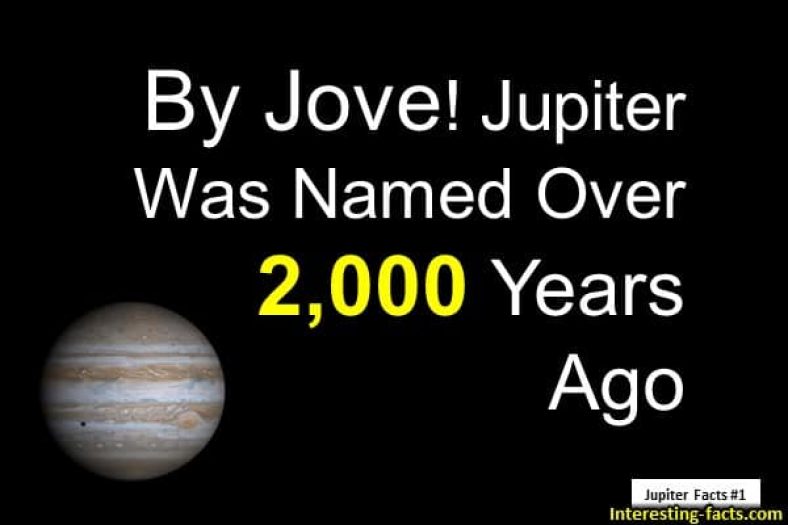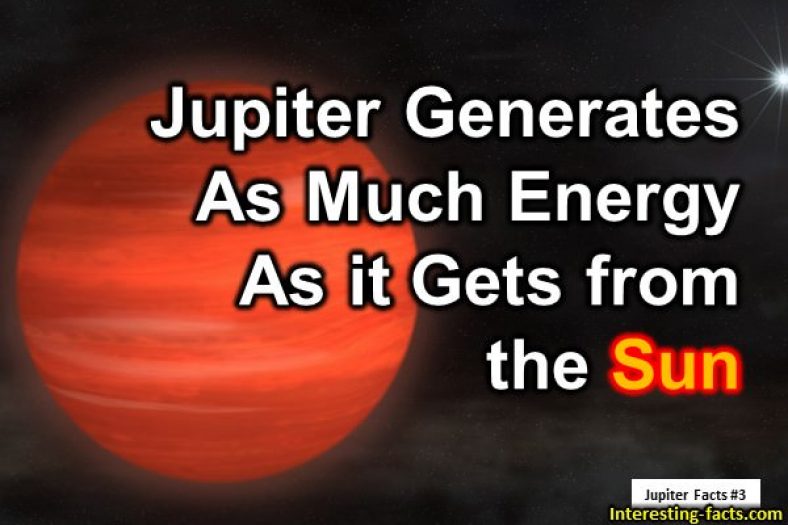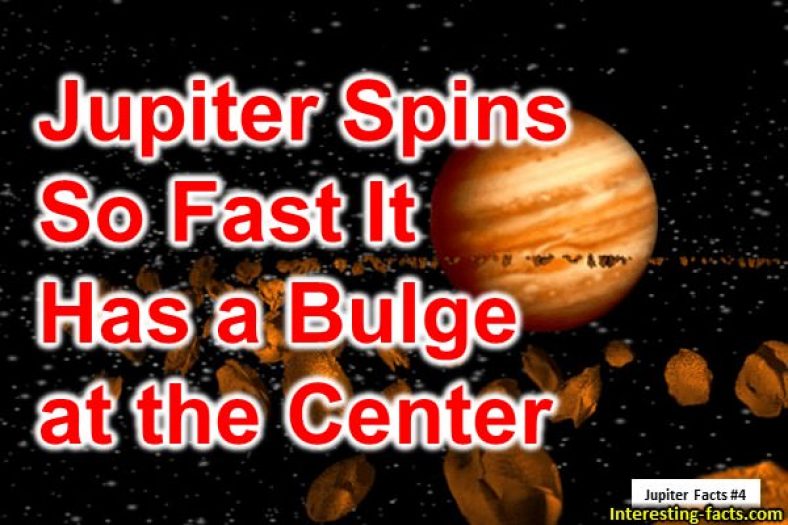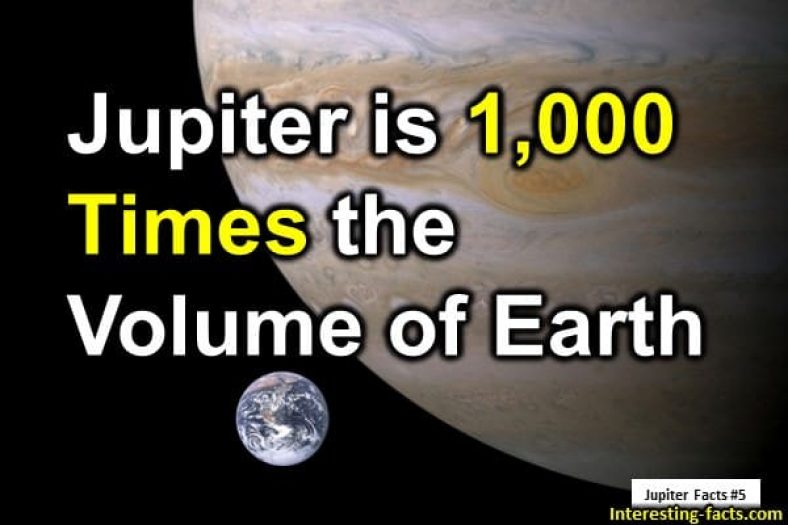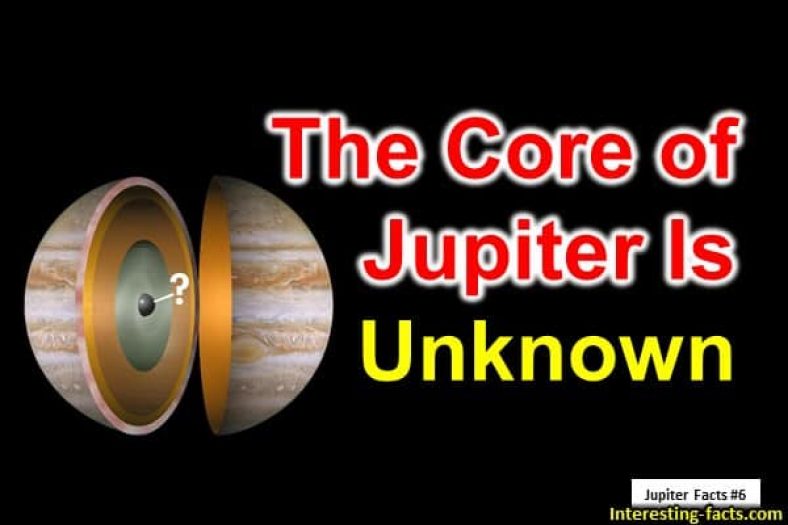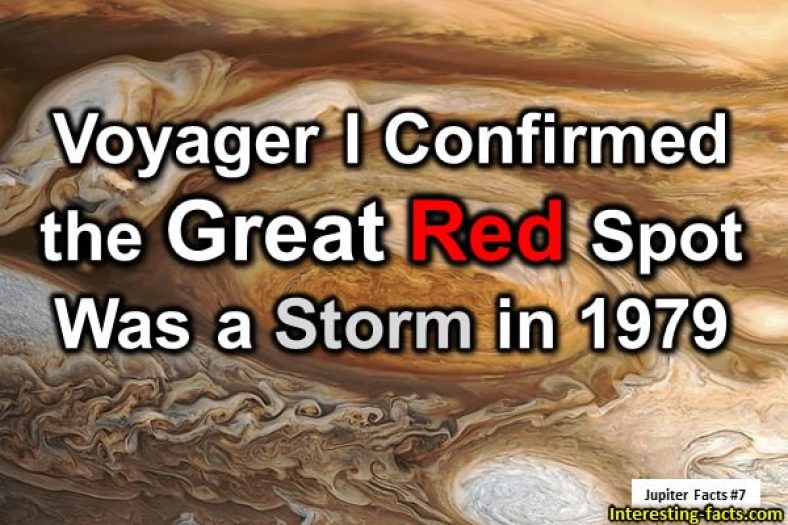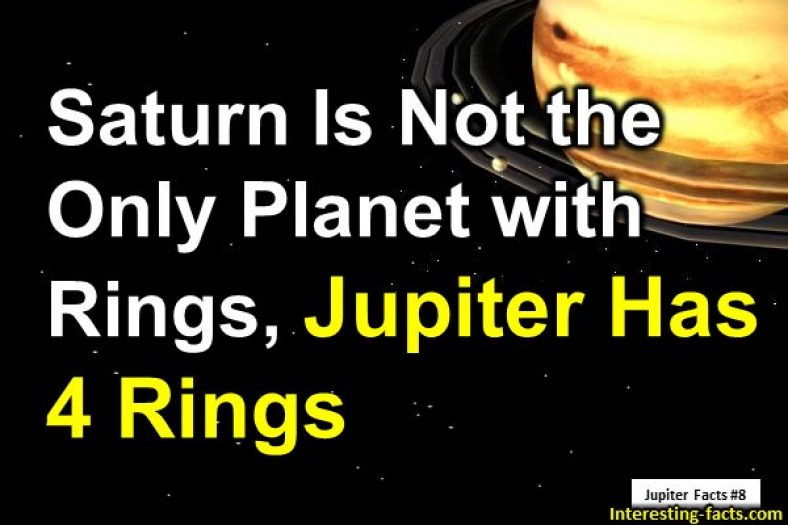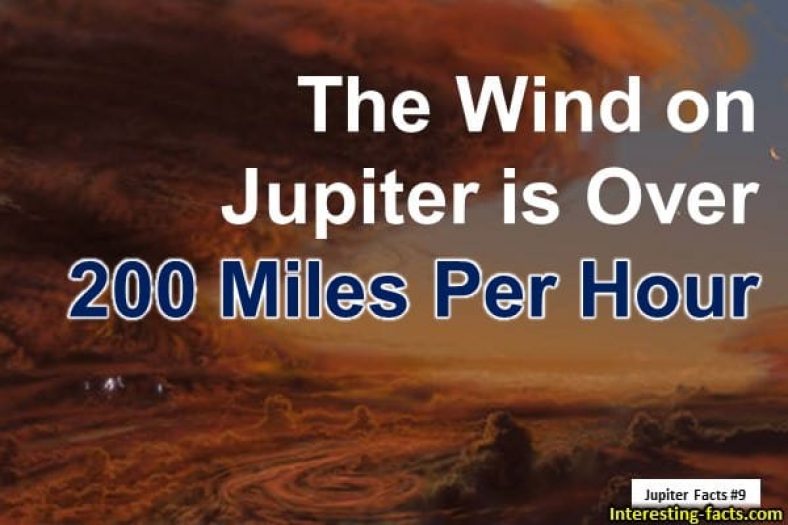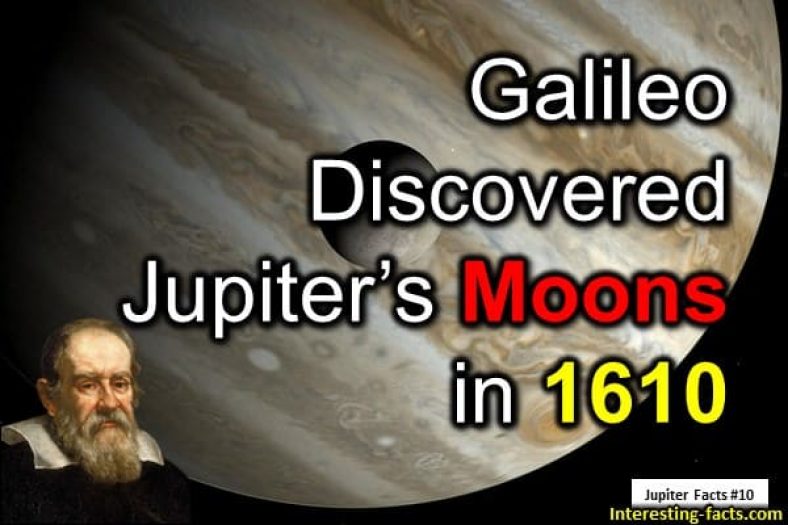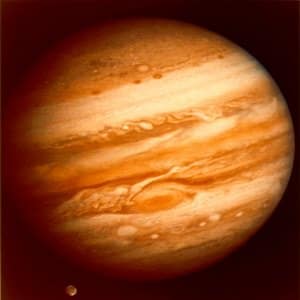Jupiter Facts – 10 Interesting Facts about Jupiter
By Jove! Jupiter Was Named Over 2,000 Years Ago
Jupiter was named by the Romans, after the god Jupiter. The Romans adopted Jupiter from the Greek god Zeus. Jupiter is the king of the Olympian gods, and is also known as the god of thunder.
Jupiter was the top god of all those worshipped by people in the Roman Empire. He was the big guy in charge of the other gods! Given this, it’s not one of the more surprising Jupiter facts that the massive planet was given this big name.
Jupiter was also known as Jove and when describing features of the planet Jupiter, the adjective is Jovian. Jove is also where the phrase, “By Jove, I think you’ve got it” comes from. This is like saying, “My god, I think you’ve done it”.
Because the Roman names of some planets continued to be used over time, other planets, which were discovered after Roman times, were also named after Roman and Greek gods to continue the tradition.
back to menu ↑Jupiter is 2.5 Times As Massive As All the Other Planets Combined
This is the most well known of Jupiter facts. Jupiter is big, massive, huge! Jupiter is 2.5 times more massive than all the other planets in the solar system combined. That’s seven other planets, including Earth and the other gas giants!
One of the surprising Jupiter facts is that Jupiter was twice its current size when it formed as a planet! Deep inside of Jupiter there are chemical reactions taking place under the extreme pressure of the planet. These chemical reactions are making the planet denser, and Jupiter loses about 2cm in size each year. This is one of the fun Jupiter facts because it’s almost as if Jupiter has been on a diet for millions of years!
Despite the planet shrinking every year, the circumference of Jupiter is still huge! The equator of Jupiter measures over 250,000 miles or over 400,000 kilometers. That’s one big waistline! This makes Jupiter roughly 10 times the size of the Earth around its own equator! As a result Jupiter has over 1,000 times the volume of Earth. Jupiter could eat the Earth for dinner if it got hungry!
One of the Jupiter facts that is interesting for scientists is that Jupiter is nearly the size of a star, but hasn’t started fusion. Jupiter would need to be more massive still to have enough pressure at its core to start fusion. For now we only have one star in the solar system!
back to menu ↑Jupiter Generates As Much Energy As it Gets from the Sun
Jupiter may not be a star, but Jupiter actually radiates as much energy as it receives from the Sun. This is one of the most surprising Jupiter facts. Jupiter generates its own heat via the chemical reactions which occur deep in the center of the planet.
The chemical reactions inside of Jupiter are not the nuclear fusion that creates energy in a star like our Sun. However, the chemical reactions inside of Jupiter are powerful enough to produce as much energy as Jupiter receives from the Sun!
Perhaps the Romans chose the right name for the planet, as Jupiter the god was often depicted in mythology throwing lightning bolts. Jupiter the planet seems to have the same ability to cast energy into the Universe.
back to menu ↑Jupiter Spins So Fast It Has a Bulge at the Center
Some of the most surprising Jupiter facts relate to how fast the planet is spinning. Despite its huge size, Jupiter really knows how to move!
Jupiter spins faster than any other planet. It takes Earth 24 hours to complete one rotation. Even though the Earth would fit 1,000 times over inside of Jupiter, Jupiter completes one rotation in only 10 hours!
Because Jupiter is spinning so fast, a bulge occurs at the planet’s equator. This bulge is big enough to be seen from telescopes on Earth. The bulge gives Jupiter a kind of squashed appearance instead of being a perfect sphere.
back to menu ↑Jupiter is 1,000 Times the Volume of Earth
Jupiter is a member of the Gas Giants because it is largely composed of gas. Jupiter is made mostly from hydrogen and helium. This is another one of the fascinating Jupiter facts, because these are the elements that make up stars. Scientists speculate that Jupiter is as big as a planet can get without turning into a star. Don’t tell the Sun we said that!
There are smaller amounts of other materials that were present at the formation of the solar system in Jupiter. In addition to hydrogen and helium, Jupiter also has methane, water vapor, ammonia, carbon, neon, oxygen and sulfur.
back to menu ↑The Core of Jupiter Is Unknown
One of the unknown Jupiter facts is exactly what the core of Jupiter is like. Most scientists agree that Jupiter has a dense rocky core, but they aren’t clear as to what materials are in the core of Jupiter.
The measurements of planets that provide us with information about their composition are not sufficiently advanced to provide a clear picture of Jupiter’s core. Some scientists question whether Jupiter even still has a core!
back to menu ↑Voyager I Confirmed the Great Red Spot Was a Storm in 1979
One of the first things that people saw when they looked through telescopes at Jupiter was the Great Red Spot. This mysterious spot fascinated scientists and inspired the hunt for further Jupiter facts.
The Voyager I spacecraft flew by Jupiter in 1979 and answered the question that had puzzled scientists for centuries; namely that the Great Red Spot was a actually storm. The storm in the Great Red Spot has been raging for at least 300 years, and possibly longer.
Like other Jupiter facts, facts about the Great Red Spot are massive. The Great Red Spot is a storm on Jupiter that is bigger than the size of the Earth! You can fit two or three Earths inside the Great Red Spot!
In 2000, scientists observed three smaller storms that appeared as white spots merging together. These storms merged and formed a new larger spot. This larger spot has grown in intensity and the color has changed from white to red. This observation revealed another one of the mysterious Jupiter facts and scientists now know how the Great Red Spot formed. They named this new storm Red Spot Junior.
back to menu ↑Saturn Is Not the Only Planet with Rings, Jupiter Has 4 Rings
One of the lesser-known Jupiter facts is that Jupiter has rings! While the Great Red Spot was visible from Earth through telescopes, it took the observation by the Voyager I spacecraft to establish the fact that Jupiter has rings.
In 1979, Voyager I discovered the Jovian ring system and it was observed further by the Galileo spacecraft. There are four main components to Jupiter’s rings that were discovered.
There is a thick inner ring known as the halo ring. There is a very thin, brighter, middle ring called the main ring and there are two more outer rings called gossamer rings.
The dust and particles that make up Jupiter’s rings are believed to be left over from impacts between Jupiter’s moons and other objects. Scientists are just beginning to explore Jupiter’s rings, and no doubt more mysterious Jupiter facts will be revealed as they learn more.
back to menu ↑The Wind on Jupiter is Over 200 Miles Per Hour
With so many Jupiter facts to do with storms on Jupiter, it’s not surprising to learn that Jupiter is very windy. Typical winds on Jupiter are equal to the power of a tornado here on Earth. The winds on Jupiter can reach over 200 miles per hour, or over 300 kilometers per hour!
back to menu ↑Galileo Discovered Jupiter’s Moons in 1610
We established the Jupiter facts that show how big the planet Jupiter is. Because of its huge size, people have been able to see Jupiter from Earth, even before the invention of telescopes. When telescopes were invented, more Jupiter facts were revealed and astronomers felt a strong pull towards this planet with its massive gravity.
Galileo was one of the first astronomers to become fascinated with Jupiter. Galileo identified and named some of Jupiter’s moons in 1610. This is thought to be the first time someone looked at moons other than Earth’s moon through a telescope.
In the 1660s, Cassini used his telescope to peer at Jupiter and discovered more Jupiter facts. Cassini may have been the first person to see Jupiter’s Great Red Spot. During the 1660s, another astronomer, Robert Hooke, may also have seen the Giant Red Spot when he observed Jupiter.
Jupiter played an important role in astronomy many more times throughout history. Cassini and another astronomer, Giovanni Borelli, made very precise observations of the moons of Jupiter. In the 1670s, it was realized that the moons of Jupiter appeared to move 17 minutes later, when the Sun was between Earth and Jupiter. These observations were later used to estimate the speed of light.
Many spacecraft launched from Earth to explore the solar system have flown by Jupiter. Pioneer 10, Pioneer 11, Voyager I, Voyager II, Ulysses, Cassini and the New Horizons spacecraft have all flown by Jupiter, in attempts to discover more Jupiter facts.
Jupiter holds a big place in the hearts and minds of astronomers and people all over the world. One of the planets that can be seen with the naked eye, Jupiter is more massive than all the other planets combined.
Perhaps the huge size of Jupiter explains why people are fascinated with Jupiter facts. It has so much gravity, it pulls our interest!
Interesting Facts about Jupiter Summary
Jupiter facts are simply massive facts about the biggest planet in the solar system. Jupiter is considered a gas giant, along with the planets of Saturn, Uranus and Neptune. Jupiter has been known to astronomers throughout human history because its large size means it can be easily seen in the night sky without the aid of a telescope.
Jupiter is typically the fourth brightest object in the night sky and has long captured our attention with its glow. Jupiter facts for kids are a great way to get them excited about science and astronomy. Many Jupiter facts are simply massive! In fact, Jupiter is more massive than all the other planets combined.

